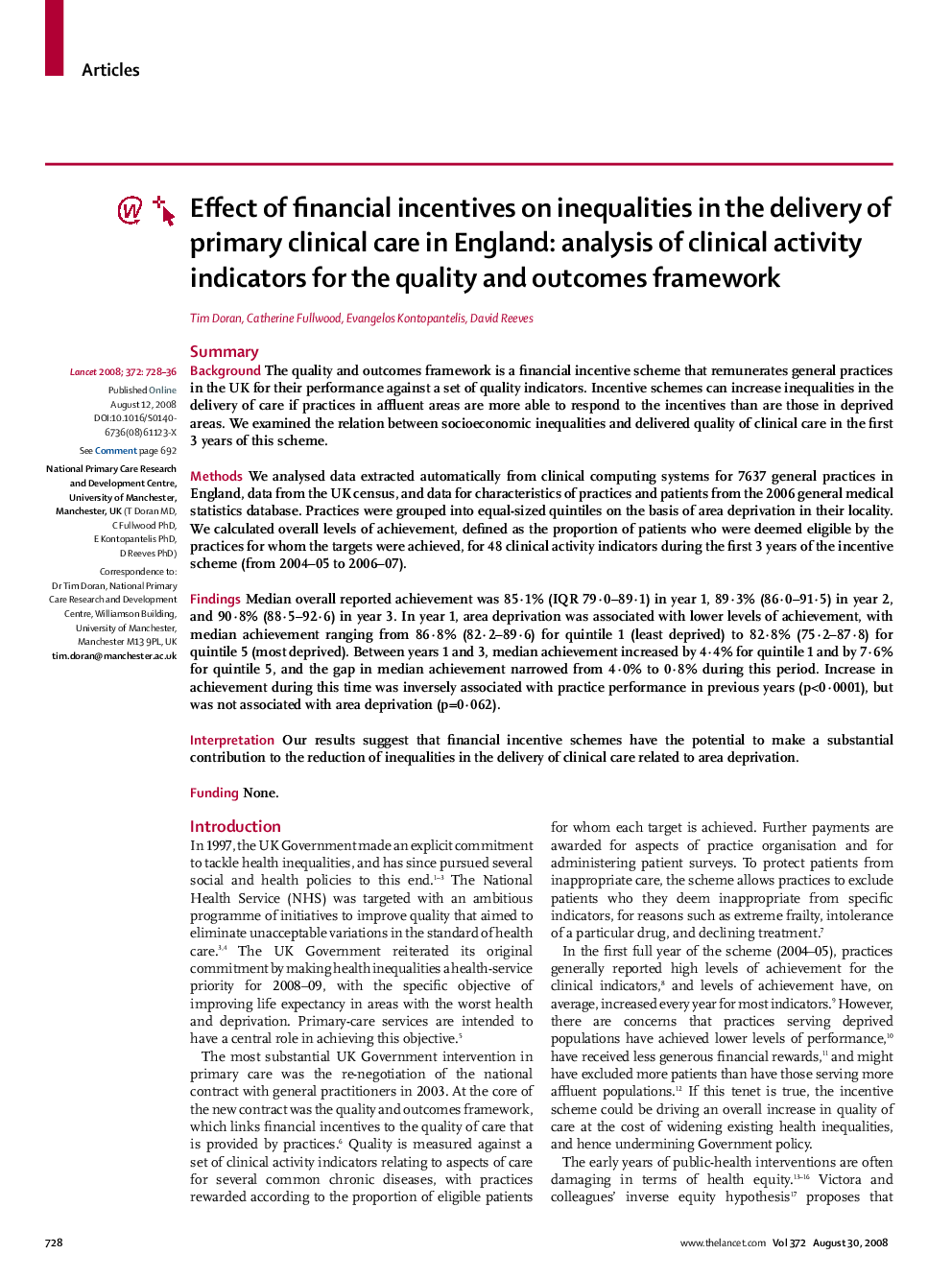| کد مقاله | کد نشریه | سال انتشار | مقاله انگلیسی | نسخه تمام متن |
|---|---|---|---|---|
| 3496192 | 1234366 | 2008 | 9 صفحه PDF | دانلود رایگان |

SummaryBackgroundThe quality and outcomes framework is a financial incentive scheme that remunerates general practices in the UK for their performance against a set of quality indicators. Incentive schemes can increase inequalities in the delivery of care if practices in affluent areas are more able to respond to the incentives than are those in deprived areas. We examined the relation between socioeconomic inequalities and delivered quality of clinical care in the first 3 years of this scheme.MethodsWe analysed data extracted automatically from clinical computing systems for 7637 general practices in England, data from the UK census, and data for characteristics of practices and patients from the 2006 general medical statistics database. Practices were grouped into equal-sized quintiles on the basis of area deprivation in their locality. We calculated overall levels of achievement, defined as the proportion of patients who were deemed eligible by the practices for whom the targets were achieved, for 48 clinical activity indicators during the first 3 years of the incentive scheme (from 2004–05 to 2006–07).FindingsMedian overall reported achievement was 85·1% (IQR 79·0–89·1) in year 1, 89·3% (86·0–91·5) in year 2, and 90·8% (88·5–92·6) in year 3. In year 1, area deprivation was associated with lower levels of achievement, with median achievement ranging from 86·8% (82·2–89·6) for quintile 1 (least deprived) to 82·8% (75·2–87·8) for quintile 5 (most deprived). Between years 1 and 3, median achievement increased by 4·4% for quintile 1 and by 7·6% for quintile 5, and the gap in median achievement narrowed from 4·0% to 0·8% during this period. Increase in achievement during this time was inversely associated with practice performance in previous years (p<0·0001), but was not associated with area deprivation (p=0·062).InterpretationOur results suggest that financial incentive schemes have the potential to make a substantial contribution to the reduction of inequalities in the delivery of clinical care related to area deprivation.FundingNone.
Journal: - Volume 372, Issue 9640, 30 August–5 September 2008, Pages 728–736